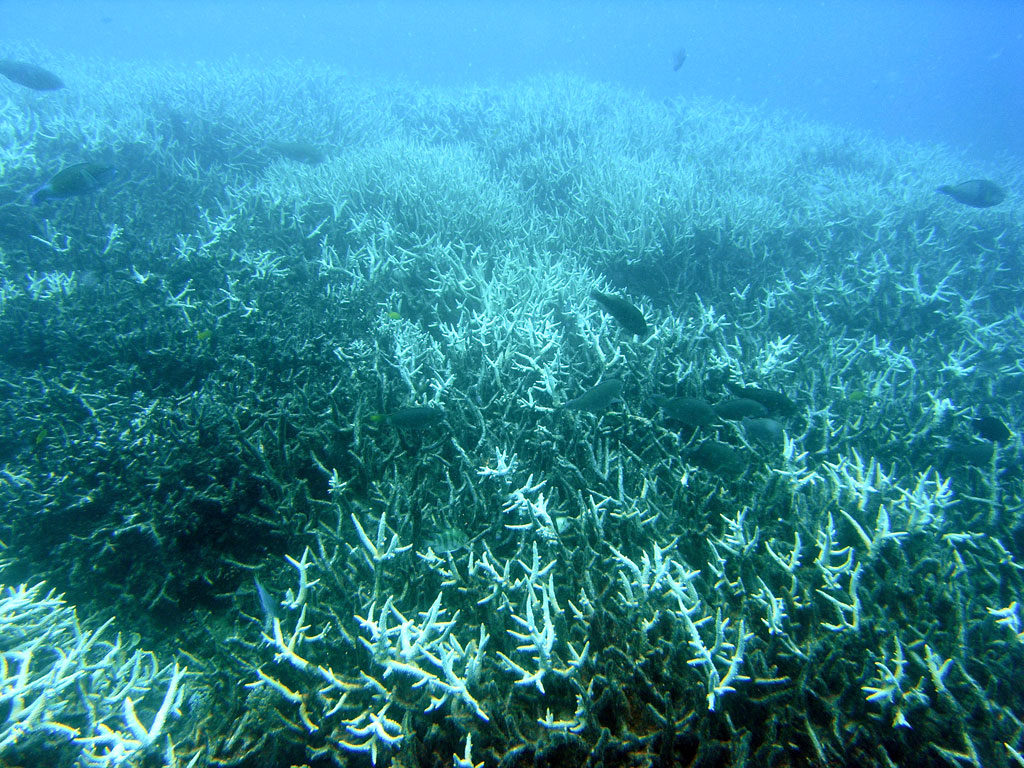Imagine wandering through a vast desert, empty for thousands of miles in every direction. Think about the relief and joy you’d feel to encounter an oasis full of life. Swimming through the open ocean, bumping into a coral reef must offer the same burst of biodiversity. Yet, these unique ecosystems are very sensitive to environmental changes. Coral and the species that depend on it all struggle to survive when temperatures are higher than optimal.
Increased temperatures don’t immediately kill coral. As temperatures rise, they initially undergo a process called bleaching, whereby they expel symbiotic algae that help provide them with energy and nutrients. Like fabric doused in bleach, this leads to the coral losing its color, but unlike fabric, it isn’t necessarily permanent. However, it does weaken the coral, and although they can recover from bleaching, further exposure to high temperatures will eventually kill them. These temperatures only need to be a few degrees above the usual maximum, so small changes can be really significant.
This is particularly concerning given that scientists predict the ocean temperatures will rise in the coming years as a result of climate change. To understand how any future changes might affect coral reefs, it’s vital to have quantitative data to relate changes in temperature to the response of the coral. Ocean scientists use a measurement called ‘Degree Heating Weeks’ (DHW), which provides a measure of both how long coral is exposed to a higher temperature, and how intense the heating is. We can measure this using satellite data, allowing continuous coverage of coral reefs globally.
With the satellite data in hand, a collaborative group of researchers from Australia and the United States have explored how the dramatic increases in temperature in late 2015 to early 2016 affected coral in the Great Barrier Reef, off of Australia’s east coast. This bleaching event has been widely recognized as a historically catastrophic period for the Barrier Reef, but the authors of the new study are the first to investigate how the bleaching and coral death was linked to the direct changes in temperature.
Their findings are not encouraging for the coral. Earlier studies have suggested that coral bleaching occurs after 4 Degree Heating Weeks and the coral dies after 6 Degree Heating Weeks. However, this new study found that coral begins to die as early as 3 Degree Heating Weeks, and more than half of it is killed by 5 Degree Heating Weeks. Given that more than 20% of the whole reef was exposed to 8 or more Degree Heating Weeks, the extent of the coral death throughout the reef was considerable. In fact, 30% of the coral had died.
When the authors looked in more detail at which corals were being most strongly affected, they found distinct differences between certain species. Where bleaching was most intense, this led to big shifts in the overall structure of the reef; given how delicate these ecosystems are, such major changes in the balance of species will have a diverse range of effects on the wide variety of other marine creatures that depend on the coral.
Fortunately, corals can recover from mass die-off and bleaching events. This takes time however; even for the most fast-growing coral, recovery tends to require 10 years, while the slower-growing coral needs as long as 30 years. As demonstrated by the study authors, the coral is even more sensitive than we previously realized. As the authors point out, corals will likely continue to suffer until reefs reshuffle themselves into more heat-resistant ecosystems.


